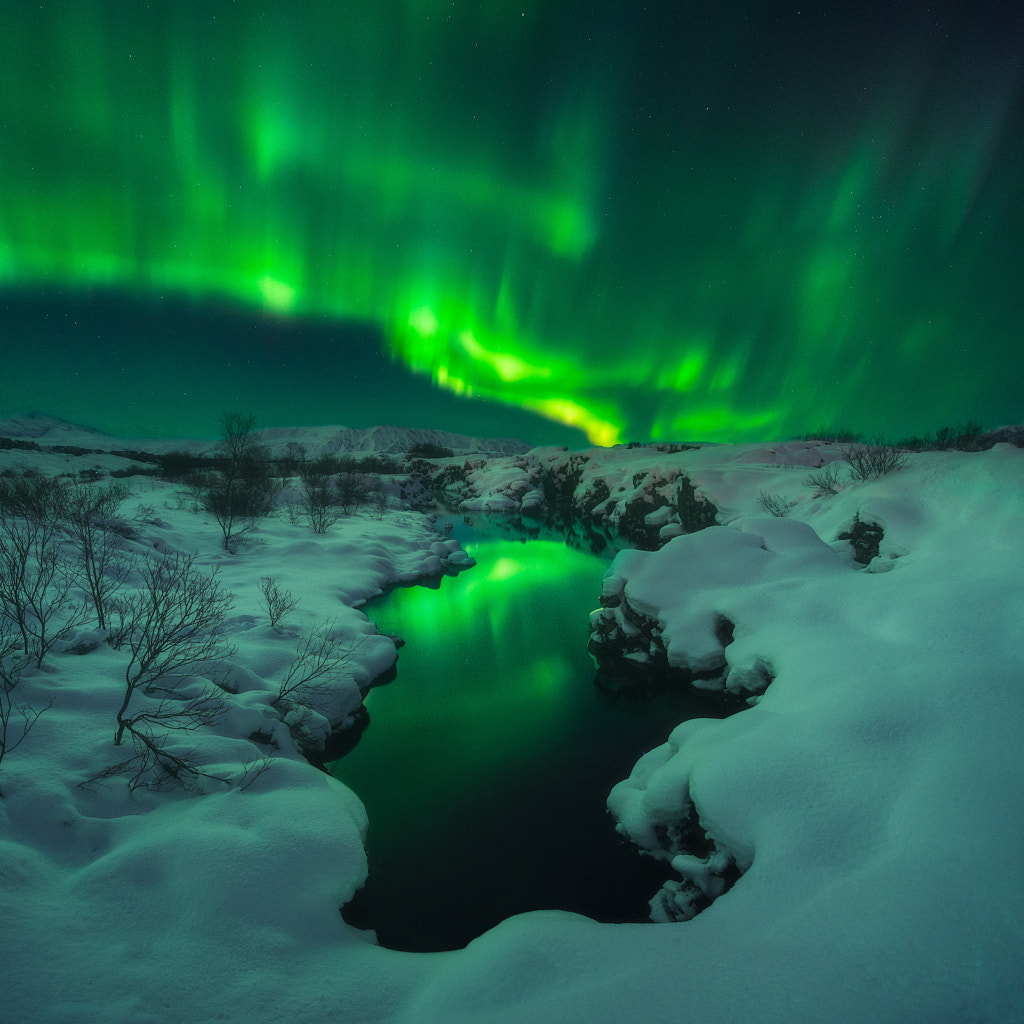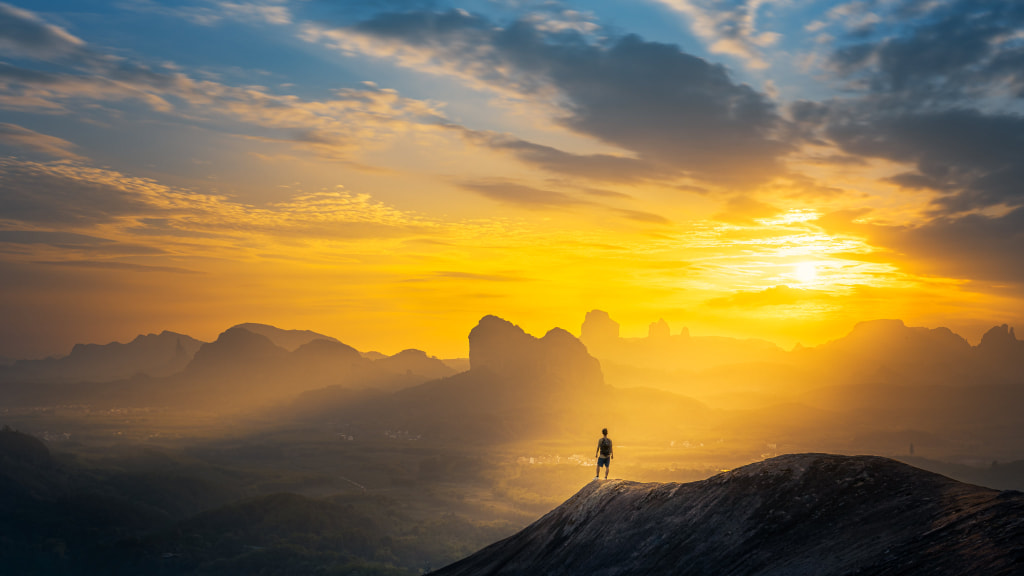Picture it: Yosemite Valley, 1861. There were no roads yet, but a photographer by the name of Carleton Watkins was there, alone in the vast landscape and surrounded by the sounds of the waterfalls. With him was a custom camera, equipped with a wide-angle lens. His goal was to show the rest of the world the beauty of this pristine wilderness.
Three years later, President Lincoln signed a bill banning development in the area and protecting it for future generations. In the intervening decades, many photographers would follow in Watkins’s footsteps, documenting Yosemite through angles, seasons, and eras he might have only dreamed of.
Today, landscape and nature photography are as rich and diverse as ever. Gear is more accessible, and awareness about the importance of conservation has risen. As the genre continues to soar in popularity, we put together this essential guide for landscape photographers, including those just setting out on their own, as Watkins did all those years ago. Whether you’re shooting flowing water in the mountains, misty twilight in the forest, or sunlit sand dunes in the desert—landscape photography is vast and ever-expanding—you can use these tips to your advantage.
Pack light!
While camera equipment has gotten considerably lighter than it once was, you still want to be mindful of how much you’re carrying. Bring too much, and you’ll be in pain and weighed down, which will prevent you from exploring and making the most of your trip. A purpose-built camera backpack can make the process much easier; do your research and try a few on to see what works for you. A camera strap or clip will help you keep your camera accessible when you need it.
With weight in mind, pack only the essential gear. A wide-angle lens is the go-to choice for many landscape photographers, with some opting for a 16-35mm for that larger field of view (Iurie Belegurschi, for instance, is known for his jaw-dropping wide-angle landscapes, many of which were made with a 16-35mm). Instead of packing multiple primes, go for a zoom.
If you want to mix it up with a short telephoto from time to time, a 24-70mm is a great starting point and an all-around workhorse camera for landscape photography. As for tripods, invest in the best one you can afford. Ideally, it’ll be very stable on uneven ground but also lightweight. A remote shutter release will also help you avoid camera shake. (It’s also a good idea to bring extra batteries just in case, especially in cold weather.)
Experiment with shutter speed
Landscape photography famously demands narrow apertures, which allow for a wide depth of field. In order to compensate for that loss of light (higher f-stops mean less light), consider a longer shutter speed. Slower shutter speeds can also change the mood of your shoot. With flowing water, in particular, long exposures create a dreamy effect, transforming individual waves into a rolling, ethereal mist. Daniel Rericha used a shutter speed of 90 seconds to create this milky wonderland at Reynisdrangar beach in Iceland.
For long exposures in daylight, a neutral density filter is required to prevent overexposure. You can also get a graduated neutral density filter for scenes with varying brightness (for example, a bright sky and dark foreground).
Play with the “rules” of composition
Landscape photography, by nature, is a slow pursuit. Unlike street photography, where moments come and go in the blink of an eye, landscapes inspire you to take your time. Explore the area for new vantage points and elements to include in the foreground and background; consider getting low or seeking higher ground for an unexpected view of a familiar location.
Keep the general rules of composition—such as leading lines, a frame within a frame, or the rule of thirds—in the back of your mind. In this photo from the Dolomites in summertime, Daniel Gastager has placed the bridge along one of the horizontal thirds lines; the bridge itself, and its railings, also become leading lines, guiding the eye to the peak in the distance.
Incorporate reflections
Reflections open up the possibility of mixing things up and seeing a familiar scene differently. They can also reinforce your composition: in Annie Fu‘s photograph of a frost flower-covered pond (below), the reflection of the very tip of a sunlit Mount Rundle—like a downward-facing arrow—just barely touches the bottom horizontal third’s line, making for a subtle but enchanting scene.
Dramatic skies, especially around sunrise or sunset with intriguing cloud formations, also lend themselves well to reflections. Just beware of windy days; calm mornings tend to work best for smooth reflections.
Embrace all weather conditions
As long as you’re being safe and keeping your gear safe (and bringing microfiber cloths for your lens), there’s no rule that says you have to wait for perfect blue skies. By getting out there in rain, fog, mist, and snow, you’ll learn to overcome challenges and adapt to the landscape, while seeing it in a new light every time you visit. Waterfalls, in particular, can be spectacular in the rain, as the photographer Jens Ober discovered while exploring Iceland on “dull” and cloudy days.
Another benefit of storms, particularly in springtime, is the possibility of rainbows. Consider placing your horizon line slightly lower than you normally might to capture the majesty of the sky, as Patryk Bieganski did on a stormy summer’s day in Poland.
Emphasize scale
To convey a sense of scale, think about items, figures, or elements to include in your frame. The most popular of these is probably the human figure, as including the silhouette of a person immediately establishes the vastness of the surrounding landscape. Consider using color to your advantage here; in this photo from the breathtaking root bridges of Meghalaya, Daniel Kordan uses the vivid red of the child’s dress to bring out the lush greens of the landscape (a complementary color scheme).
You can also use other familiar elements, such as a car on the road, a boat at sea, or a train running along a track (the famous crashed plane in Sólheimasandur, Iceland, is one particularly surreal example). Perhaps you’ll happen upon a house or lighthouse. Animals in the distance can work similarly to people, grounding an image and placing us within the scene.
Protect the land
One problem with the rise in landscape photography in recent years has been over-tourism. In 2018, you might remember that the Jackson Hole Travel & Tourism Board actually asked visitors to stop geotagging remote forests and lakes. In one spot, Delta Lake, the number of daily visitors increased that year from one or two to more than a hundred. As a result of incidents of this sort, some leading landscape and nature photographers, including Marco Grassi, will not geotag the exact location of pristine, untouched places that aren’t widely known. It’s a simple way to keep them wild.
In conclusion
Landscape photography is constantly growing and evolving. Today, landscape photography often requires thoughtful post-processing, with advanced techniques like focus-stacking and blending exposures opening up more creative possibilities. But it still boils down to your vision and your experience with the natural world; when done well, landscape photography immerses us in the wild, evoking the feelings you experienced when you were there, and inspiring us to protect these places for future generations.
Not on 500px yet? Sign up here to explore more impactful photography.
The post Landscape photography tips appeared first on 500px.














